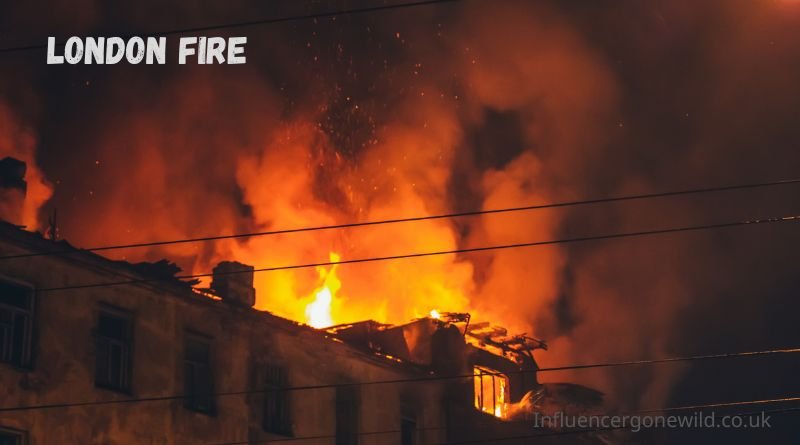The history of London Fire incidents is a testament to both tragedy and resilience. From the catastrophic Great Fire of London in 1666 to modern-day emergencies, fire outbreaks in London have shaped the city’s architecture, policies, and community spirit. Understanding these events, their aftermath, and how they influence contemporary fire safety measures is essential.
The Great Fire of London: A Turning Point
Origins and Devastation
The Great Fire of London, which started on September 2, 1666, in a bakery on Pudding Lane, is one of the most infamous events in British history. The fire raged for four days, consuming nearly 13,200 houses, 87 parish churches, and St. Paul’s Cathedral. Its impact on London was profound, leaving over 70,000 residents homeless.
The fire spread rapidly due to a combination of narrow streets, timber-framed houses, and a lack of effective firefighting equipment. Efforts to contain the flames were hindered by strong winds and delayed decisions by city officials. Despite its destruction, the London Fire served as a catalyst for significant urban and architectural reforms.
Lessons Learned
In the wake of the fire, new building codes were introduced to reduce the risk of future conflagrations. Brick and stone replaced wood as primary construction materials, and streets were widened to prevent the spread of flames. The event also highlighted the importance of organized firefighting efforts, leading to the establishment of the first insurance-funded fire brigades in the late 17th century.
Modern-Day London Fire Challenges
Increasing Fire Risks
While advancements in fire safety have significantly reduced the frequency of large-scale fires, London continues to face challenges. Urban densification, high-rise buildings, and the growing use of flammable materials in construction have introduced new risks. Recent incidents, such as the Grenfell Tower fire in 2017, underscore the critical need for stringent fire safety regulations and effective emergency responses.
Grenfell Tower: A Modern Tragedy
The Grenfell Tower fire on June 14, 2017, was one of the most devastating London Fire incidents in recent history. Originating from a malfunctioning refrigerator on the fourth floor, the fire quickly spread through the building due to flammable cladding and insulation materials. The tragedy claimed 72 lives and left hundreds displaced, sparking widespread outrage and calls for accountability.
In the aftermath, the incident revealed systemic issues in building safety regulations, inspection processes, and the management of social housing. It prompted a nationwide review of fire safety practices and led to the implementation of stricter building codes.
The Role of Fire Services in London
Evolution of Firefighting
London’s fire services have evolved significantly since the Great Fire. Today, the London Fire Brigade (LFB) is one of the largest and most advanced firefighting organizations in the world. Established in 1865, the LFB has continuously adapted to meet the city’s changing needs.
The brigade operates with over 100 fire stations strategically located across London, ensuring rapid response times. It employs advanced technologies, including thermal imaging cameras, drones, and high-powered water pumps, to tackle fires effectively. Moreover, LFB firefighters undergo rigorous training to handle a wide range of emergencies, from residential fires to industrial accidents.
Community Engagement and Prevention
Preventing fires is as crucial as extinguishing them. The LFB actively engages with communities through educational programs, safety campaigns, and fire risk assessments. These initiatives aim to raise awareness about fire hazards and promote proactive measures to reduce risks.
The importance of smoke alarms, fire-resistant materials, and clear evacuation plans cannot be overstated. By fostering a culture of safety, the LFB helps mitigate the likelihood of fires and minimizes their impact when they occur.
Advances in Fire Safety Technology
Innovative Solutions
Technological advancements have revolutionized fire safety in London. Modern buildings are equipped with state-of-the-art fire detection and suppression systems, such as sprinklers, heat detectors, and fire curtains. These technologies play a crucial role in containing fires and allowing occupants to evacuate safely.
Artificial intelligence (AI) and the Internet of Things (IoT) have also found applications in fire safety. AI-powered systems can predict potential fire hazards by analyzing data from sensors, while IoT-enabled devices facilitate real-time monitoring and response. These innovations enhance the ability of fire services to prevent and manage emergencies effectively.
Challenges and Limitations
Despite these advancements, challenges remain. Retrofitting older buildings with modern fire safety systems is often costly and logistically complex. Ensuring compliance with fire safety regulations requires ongoing inspections and enforcement, which can strain resources. Nonetheless, continuous investment in technology and infrastructure is essential to address these issues.
The Human Impact of Fires
Psychological and Social Consequences
The aftermath of a London Fire extends beyond physical destruction. Survivors often experience psychological trauma, including post-traumatic stress disorder (PTSD), anxiety, and depression. Displacement from homes and the loss of personal belongings further exacerbate emotional distress.
Community support plays a vital role in recovery. Charitable organizations, local authorities, and volunteers provide assistance to affected individuals, offering shelter, counseling, and financial aid. Rebuilding lives and communities after a fire requires a collective effort and sustained commitment.
Memorials and Remembrance
Tragic fire incidents are often commemorated to honor the lives lost and ensure that lessons are not forgotten. Memorials, such as the Grenfell Tower tribute, serve as reminders of the importance of fire safety and the need for systemic change. They also provide a space for reflection and healing for survivors and their families.
Preparing for the Future
Strengthening Regulations
The evolving landscape of fire safety necessitates continuous updates to regulations and policies. The UK government has introduced measures such as the Building Safety Act 2022, which aims to enhance accountability and oversight in the construction industry. Ensuring compliance with these regulations is crucial to reducing fire risks in London.
Community Involvement
Building a fire-resilient city requires active participation from all stakeholders. Residents, businesses, and policymakers must work together to identify risks, implement preventive measures, and support fire services. Community-led initiatives, such as neighborhood watch programs and fire safety workshops, can complement official efforts and create a safer environment for everyone.
Future Prospects
As London continues to grow and evolve, addressing fire safety challenges will remain a priority. Advances in technology, coupled with robust policies and community engagement, offer a path toward a safer future. By learning from past incidents and adapting to emerging risks, London can build a resilient and fire-aware society.
In conclusion, the legacy of London Fire incidents underscores the importance of vigilance, innovation, and collaboration. Whether through historical events like the Great Fire or modern tragedies like Grenfell Tower, each incident serves as a stark reminder of the need for continuous improvement in fire safety. With collective effort and commitment, London can mitigate the impact of fires and protect its residents for generations to come.



